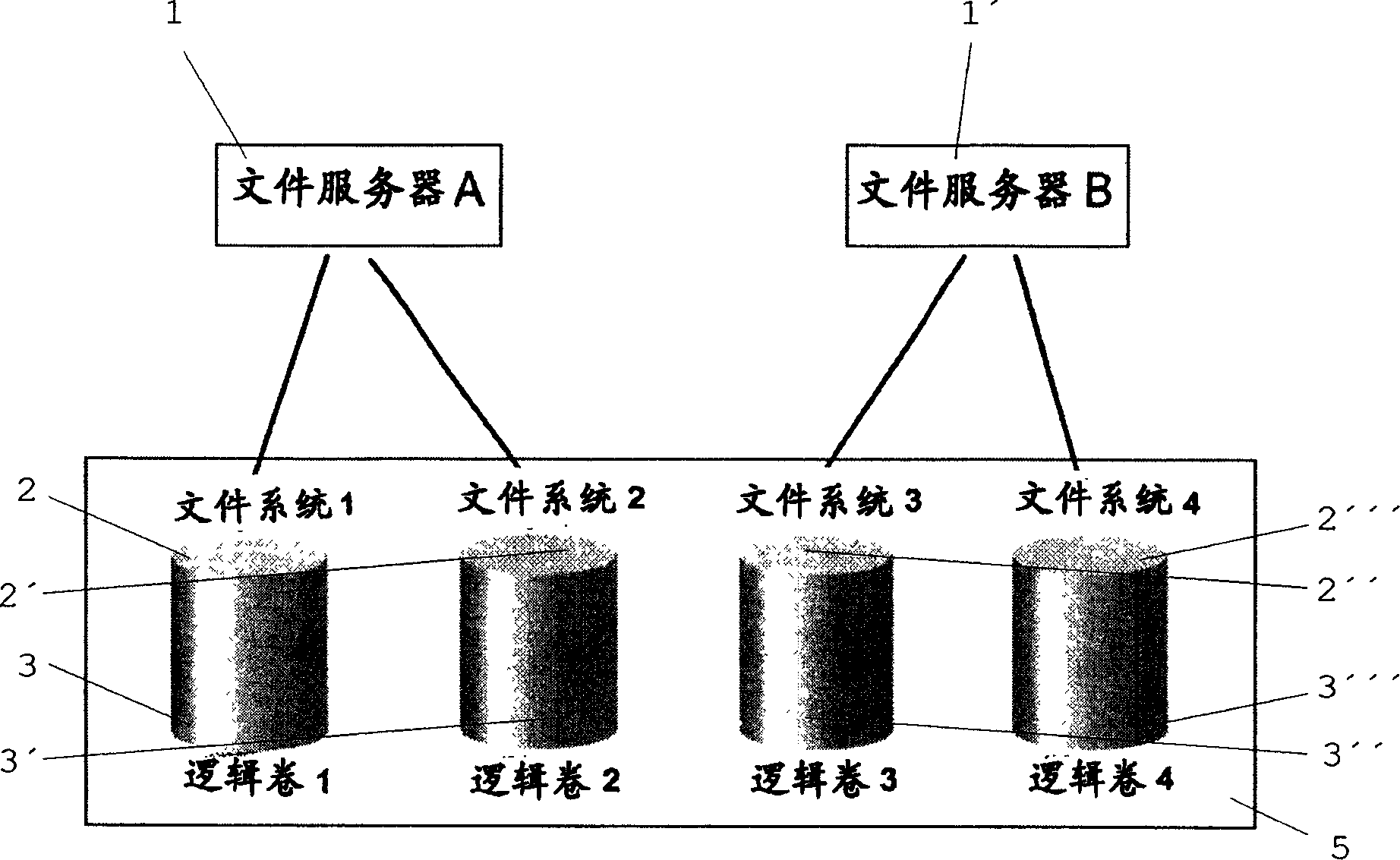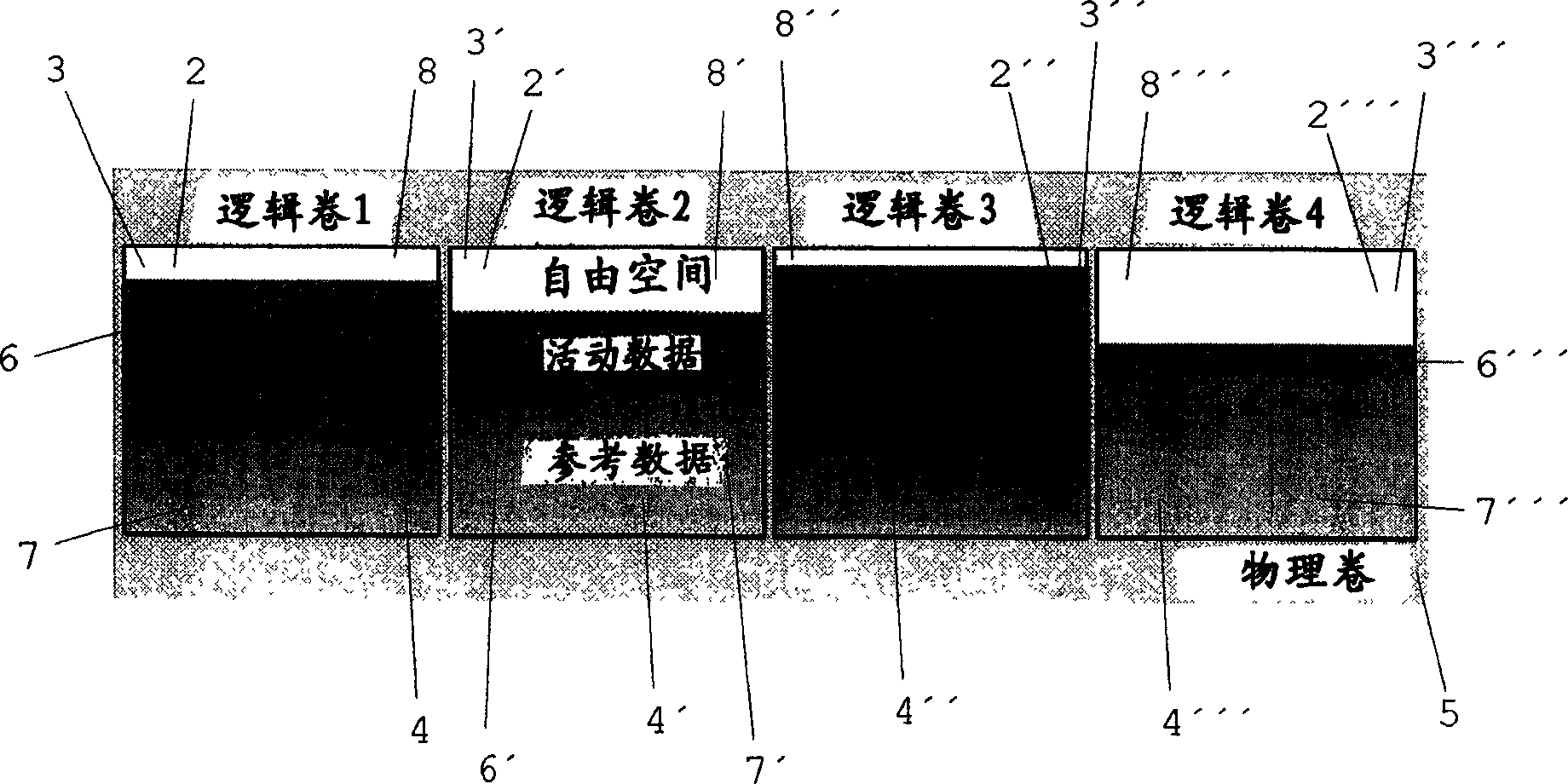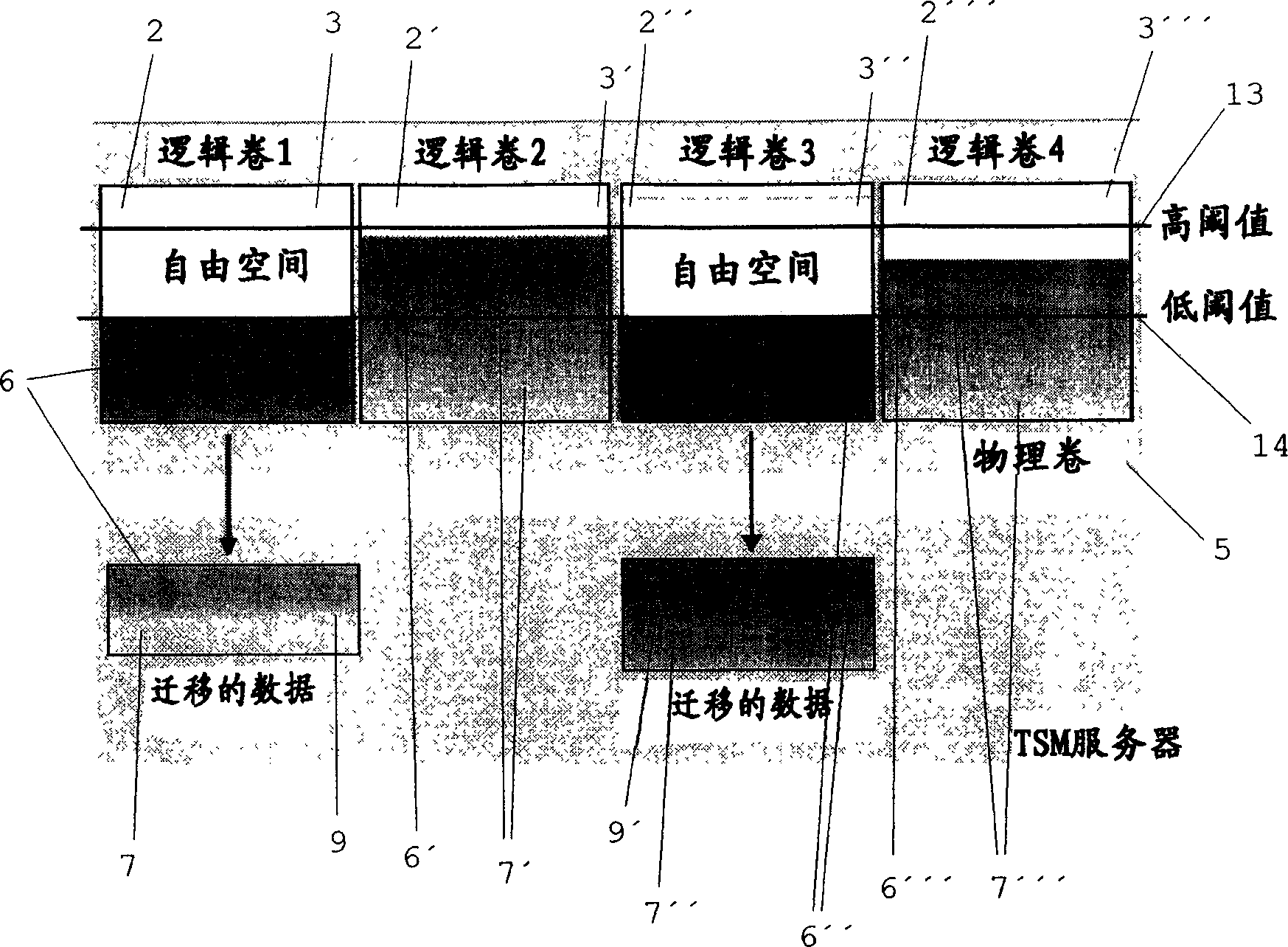Mass storage device and method for dynamically managing a mass storage device
A large-capacity storage and device technology, applied in the input/output process of data processing, electrical digital data processing, special data processing applications, etc., can solve inactivity, loss of physical storage device performance, logical volume size cannot be dynamically changed, etc. problem to achieve optimal data placement
- Summary
- Abstract
- Description
- Claims
- Application Information
AI Technical Summary
Problems solved by technology
Method used
Image
Examples
Embodiment Construction
[0045] Such as figure 1 As shown, a single file server 1 can now manage multiple file systems 2, 2' residing in different logical volumes 3, 3' on a single physical storage device 5, eg ESS or SVC. Using a SAN, the storage device 5 can also be shared between different file servers 1, 1', so that a large number of file systems 2, 2', 2", 2''... reside on the same storage device 5.
[0046] figure 1 Two machines 1, 1' are shown each managing two file systems 2, 2' and 2", 2''. The file systems 2, 2', 2", 2'' are assigned to a specific logical volume 3 , 3′, 3″, 3, wherein all data 4, 4′, 4″, 4 stored in these file systems 2, 2′, 2″, 2 reside in the same storage device 5, Such as figure 2 shown. Similarly, more file systems 2 are managed on the same storage device 5 .
[0047] similar figure 2 As shown, all file systems 2, 2', 2", 2'' contain active data 6, 6', 6", 6'' (shown in dark gray) that are changed and accessed fairly frequently and referenced Other data 7, 7'...
PUM
 Login to View More
Login to View More Abstract
Description
Claims
Application Information
 Login to View More
Login to View More - R&D
- Intellectual Property
- Life Sciences
- Materials
- Tech Scout
- Unparalleled Data Quality
- Higher Quality Content
- 60% Fewer Hallucinations
Browse by: Latest US Patents, China's latest patents, Technical Efficacy Thesaurus, Application Domain, Technology Topic, Popular Technical Reports.
© 2025 PatSnap. All rights reserved.Legal|Privacy policy|Modern Slavery Act Transparency Statement|Sitemap|About US| Contact US: help@patsnap.com



